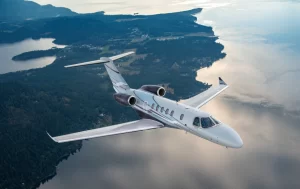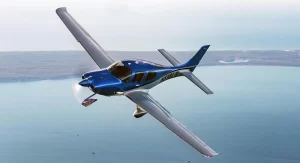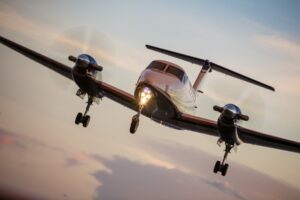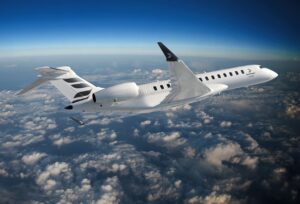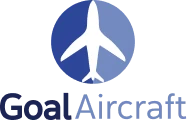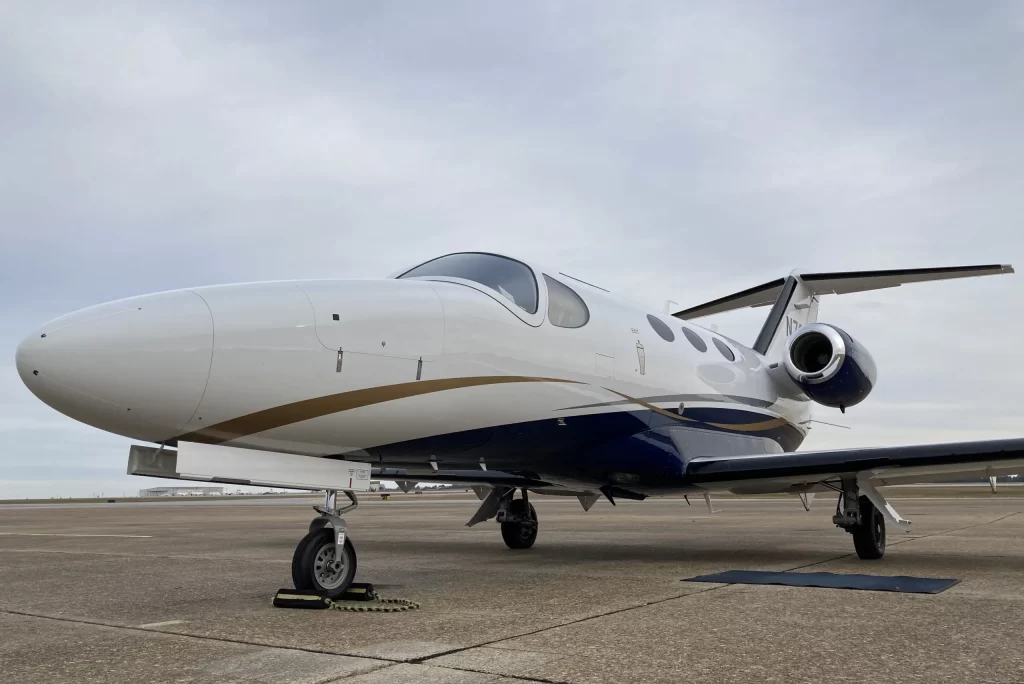
The Cessna Citation Mustang, also known as the Model 510, is a milestone in business aviation, representing Cessna’s entry into the very light jet (VLJ) market. Launched in the early 2000s, the Mustang brought a combination of efficiency, performance and affordability that won over pilots and operators around the world.
Origins and Development
Development of the Citation Mustang began in the early 2000s, with the aim of creating a very light jet that offered high performance and low operating costs. The aircraft made its first flight in April 2005 and received FAA certification in September 2006. Since then, 479 units were produced until production ended in 2017, when it was replaced by the Citation M2.
Performance and Specifications
The Citation Mustang is powered by two Pratt & Whitney Canada PW615F turbofan engines, each providing 1,460 lbf of thrust. It can reach a maximum cruising speed of 340 KTAS (629 km/h) and has a range of 1,150 nautical miles (2,130 km), making it ideal for short to medium range flights. Maximum takeoff capacity is 8,645 pounds (3,921 kg), with a payload capacity of 1,230 pounds (558 kg) with full tanks.
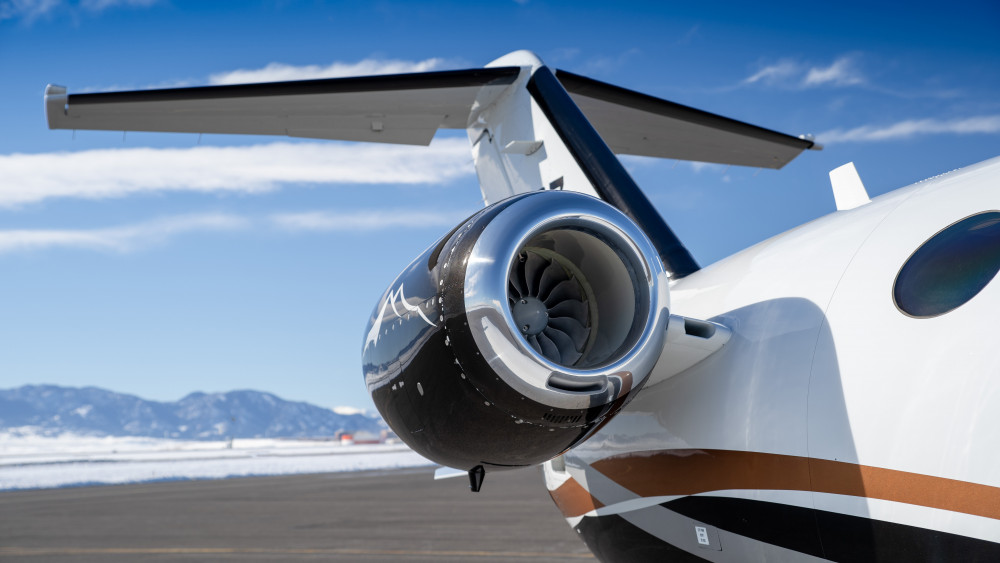
Design and Comfort
The Mustang’s interior is designed to accommodate up to four passengers in a typical configuration, with a total cabin volume of 210 cubic feet. The aircraft also includes a toilet and a cockpit for two crew members. Ergonomic design and advanced Garmin G1000 avionics technology ensure a comfortable and safe flying experience.
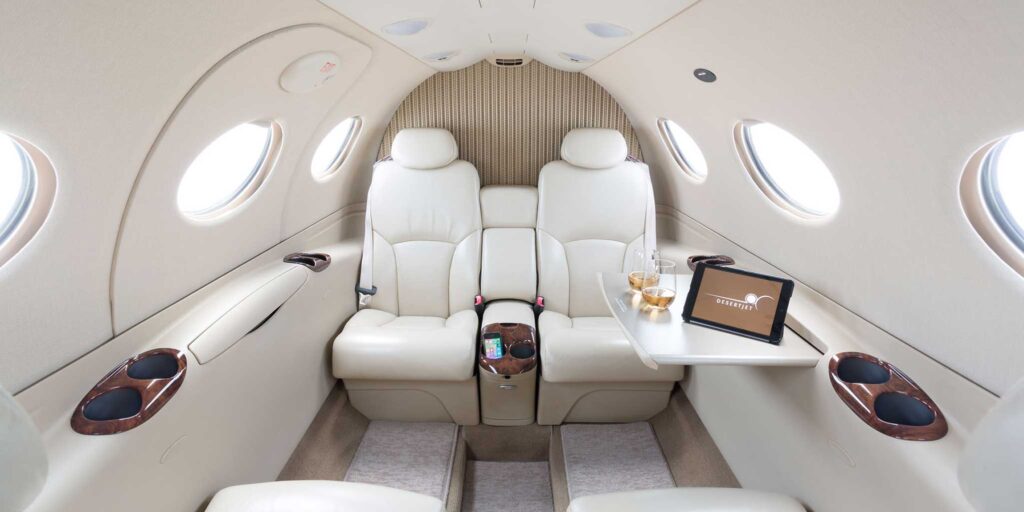
Maintenance and Operating Costs
Mustang PW615F engines have a 3,500-hour overhaul interval (TBO), with hot section inspections every 1,750 hours. Annual maintenance costs approximately $17,000, and additional inspections are required every 72 months, with costs ranging between $15,000 and $20,000. The Mustang’s operating cost is relatively low for its class, with a fuel consumption of about 88 gallons per hour.
Safety and Operation History
The Mustang has an impressive safety record, with only one fatal accident recorded since its introduction. Its stability and ease of handling are often praised by pilots, comparing its handling to Cessna’s single-engine aircraft such as the Cessna 182. Stall characteristics are predictable and manageable, providing a safe flying experience.
Resale and Market Value
Due to its reliability and popularity, the Cessna Citation Mustang maintains a good resale value. Prices range from $1.3 million to $2.7 million, depending on the year of manufacture, condition and maintenance history of the aircraft. Demand for Mustangs in the used aircraft market remains stable, reflecting their reputation as a reliable and efficient aircraft.
Technical specifications
| Especificação | Valor |
|---|---|
| Motores | 2 x Pratt & Whitney Canada PW615F |
| Empuxo (cada motor) | 1.460 lbf |
| Velocidade Máxima | 340 KTAS (629 km/h) |
| Autonomia | 1.150 milhas náuticas (2.130 km) |
| Capacidade de Decolagem | 8.645 libras (3.921 kg) |
| Capacidade de Carga Útil | 1.230 libras (558 kg) |
| Consumo de Combustível | 88 galões por hora |
| Volume da Cabine | 210 pés cúbicos |
| Número de Passageiros | 4 (configuração típica) |
| Dimensões da Cabine | Comprimento: 9.8 pés (2,97 m) |
| Largura: 4.6 pés (1,40 m) | |
| Altura: 4.5 pés (1,37 m) | |
| Ano de Introdução | 2006 |
| Fim da Produção | 2017 |
| Número Total de Unidades | 479 |
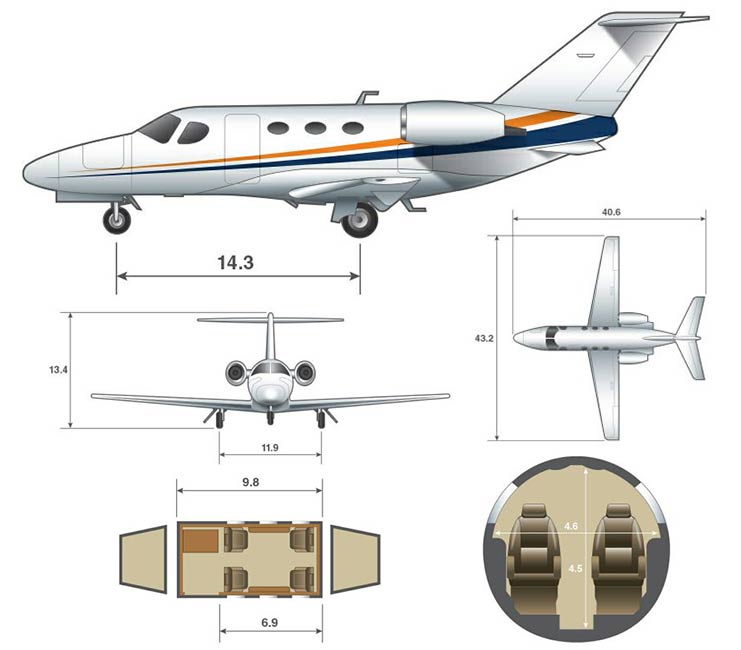
Avionics
The Cessna Citation Mustang comes standard with an advanced Garmin G1000 avionics suite, designed to provide a safe and efficient flying experience.
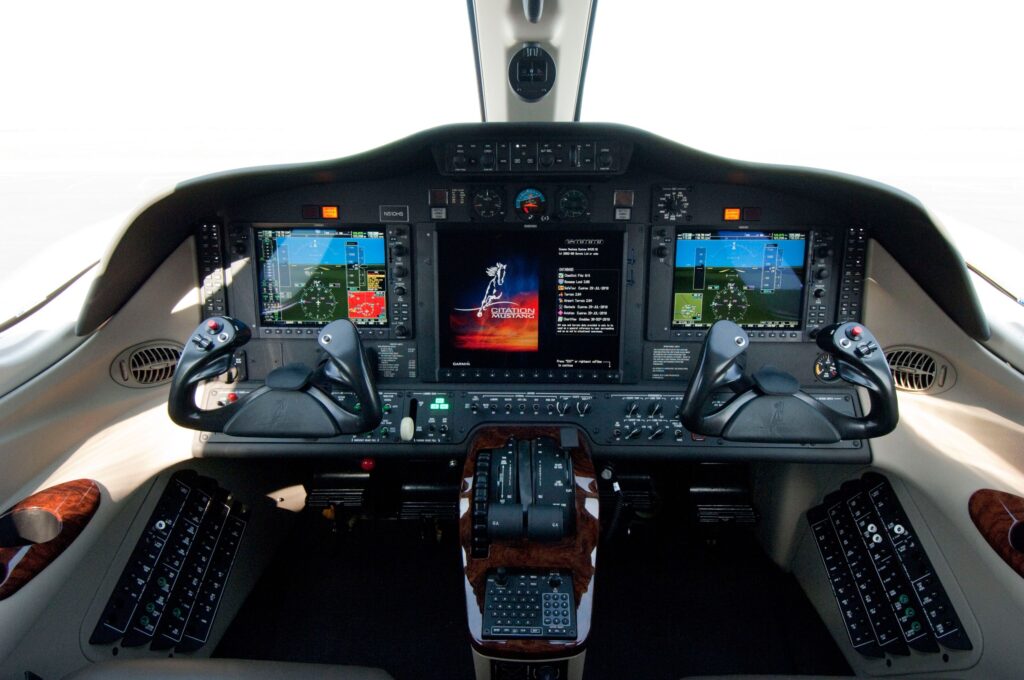
Here are the main avionics that equip the cockpit of this aircraft:
Garmin G1000 Avionics Suite
- Primary Flight Displays (PFDs):
- Two high-resolution screens display critical flight information such as attitude, altitude, speed, heading, bank angle, climb/descent rate, and navigation data.
- Multi-Function Display (MFD):
- Central screen that provides comprehensive information about aircraft systems, moving navigation maps, weather information, and other data essential for flight management.
- Synthetic Vision Technology (SVT):
- It presents a three-dimensional view of terrain, obstacles and air traffic in relation to the aircraft’s position, increasing the pilot’s situational awareness.
- Garmin SafeTaxi:
- Displays detailed airport diagrams with identification of runways and taxiways, helping with navigation during ground operations.
- Traffic Information System (TIS):
- Provides information about other nearby aircraft, helping to avoid collisions and increasing flight safety.
- Terrain Awareness and Warning System (TAWS):
- Terrain proximity warning system that warns pilots of possible dangers of collision with the ground.
- Dual AHRS (Attitude and Heading Reference Systems):
- Redundant systems that provide accurate attitude and heading data, essential for aircraft navigation and control.
- Dual Air Data Computers:
- They monitor and provide information on speed, altitude and other parameters crucial for the safe operation of the flight.
- Weather Data Link (WX) and NEXRAD Weather Radar:
- Systems that provide meteorological data in real time, allowing safer and more efficient flight planning.
- Automatic Dependent Surveillance-Broadcast (ADS-B):
- System that improves air traffic surveillance, providing accurate and real-time position information.
- Dual Integrated Navigation/Communication Radios:
- They provide navigation, communication and meteorological information, essential for the safe and efficient operation of the flight.
The Cessna Citation Mustang is an outstanding example of innovation and efficiency in the very light jet category. Combining robust performance, comfort and low operating costs, it remains a popular choice among pilots and business aircraft owners.
Fontes:
- Wikipedia
- Aviator Insider
- Aero Corner
- Liberty Jet
- Garmin G1000 Overview
- Aero News Network – Garmin G1000
Goal Aircraft is committed to providing the best solutions in executive aviation, ensuring excellence and total satisfaction in each acquisition. Don’t miss the opportunity to elevate your flying experience with the Hawker 400. Contact us today and take off into the future of business aviation.

